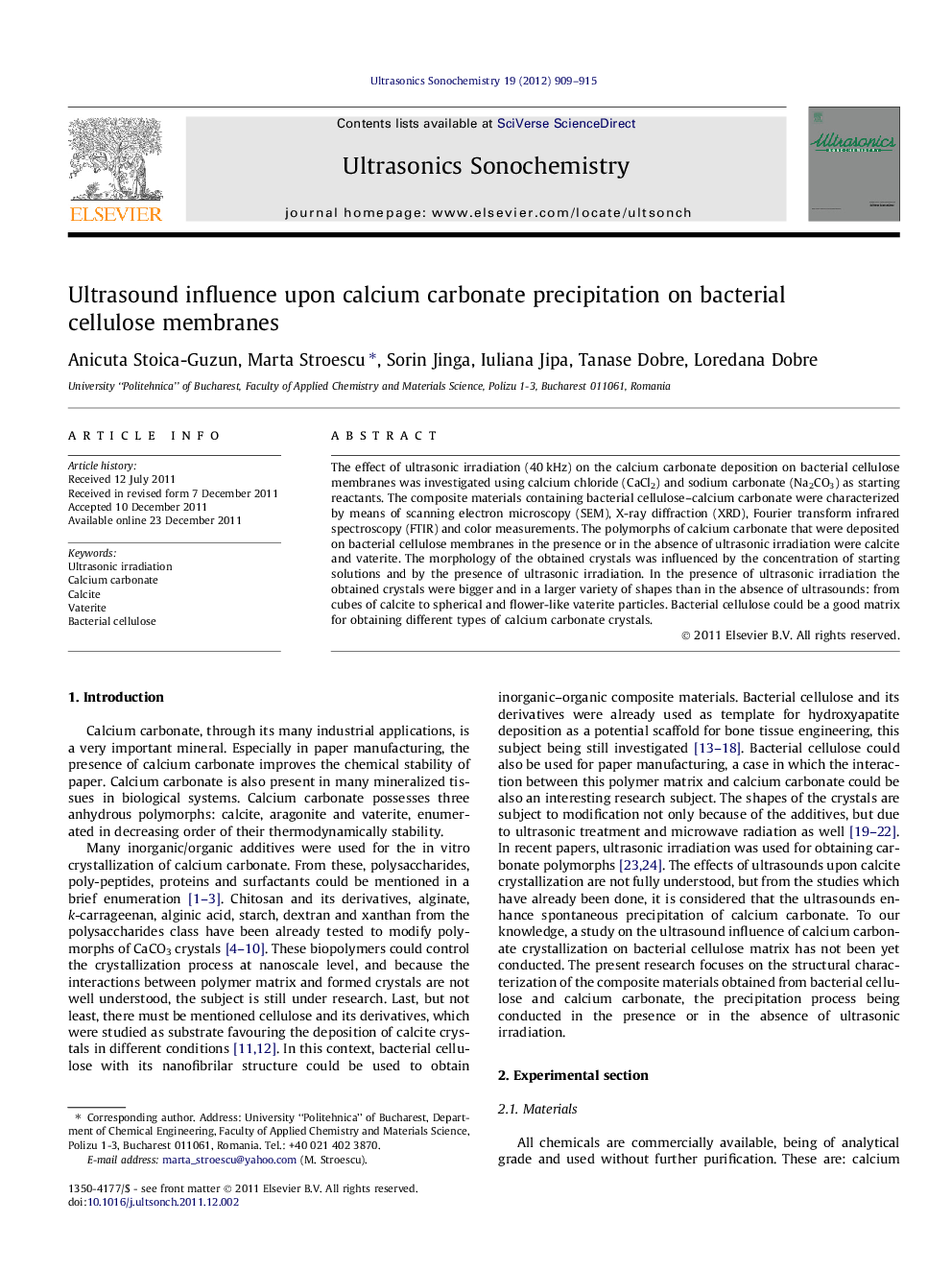| Article ID | Journal | Published Year | Pages | File Type |
|---|---|---|---|---|
| 1270087 | Ultrasonics Sonochemistry | 2012 | 7 Pages |
The effect of ultrasonic irradiation (40 kHz) on the calcium carbonate deposition on bacterial cellulose membranes was investigated using calcium chloride (CaCl2) and sodium carbonate (Na2CO3) as starting reactants. The composite materials containing bacterial cellulose–calcium carbonate were characterized by means of scanning electron microscopy (SEM), X-ray diffraction (XRD), Fourier transform infrared spectroscopy (FTIR) and color measurements. The polymorphs of calcium carbonate that were deposited on bacterial cellulose membranes in the presence or in the absence of ultrasonic irradiation were calcite and vaterite. The morphology of the obtained crystals was influenced by the concentration of starting solutions and by the presence of ultrasonic irradiation. In the presence of ultrasonic irradiation the obtained crystals were bigger and in a larger variety of shapes than in the absence of ultrasounds: from cubes of calcite to spherical and flower-like vaterite particles. Bacterial cellulose could be a good matrix for obtaining different types of calcium carbonate crystals.
► Calcium carbonate was deposed on bacterial cellulose under ultrasound irradiation. ► Calcite and vaterite were the polymorphs identified for all the samples. ► Under ultrasonic irradiation a large variety of crystal shapes were obtained. ► Crystals from cubes of calcite to spherical and flower-like vaterite were observed.
